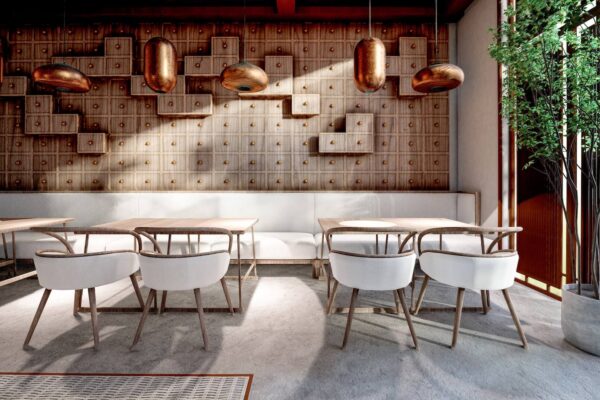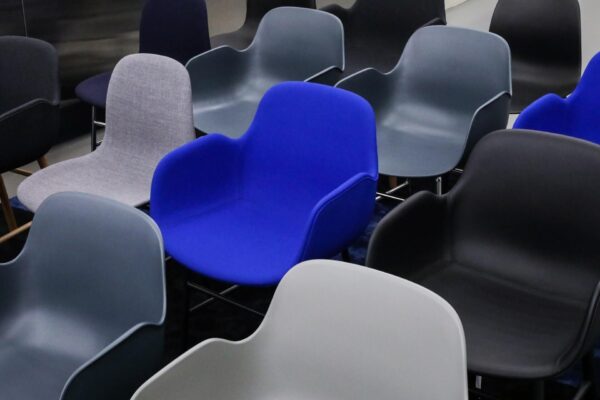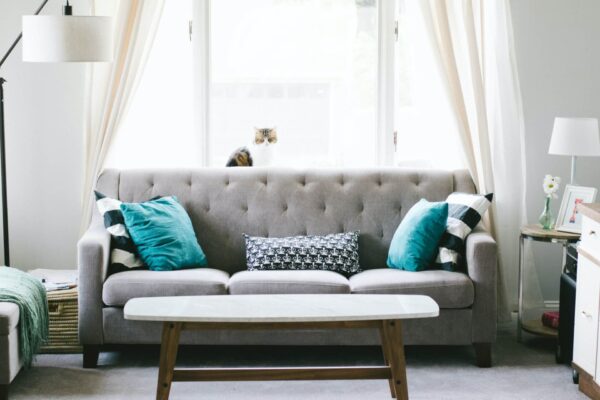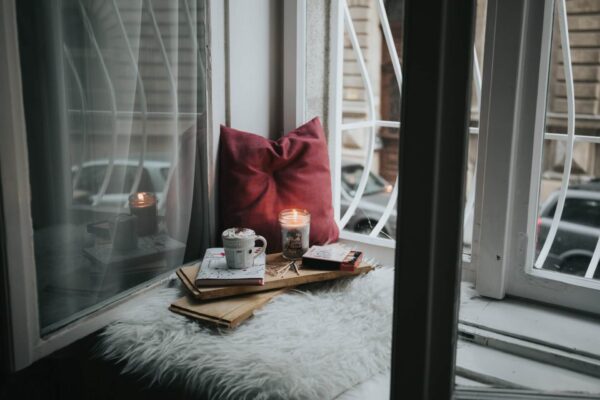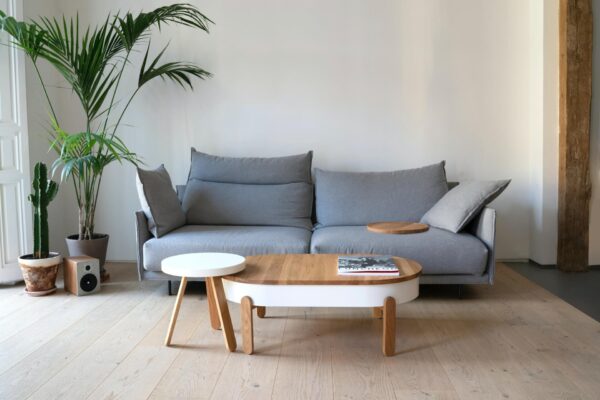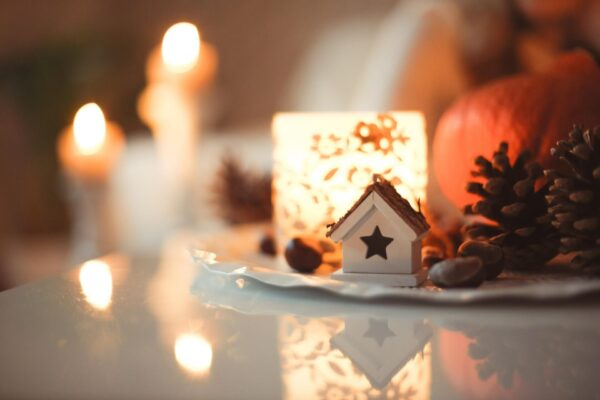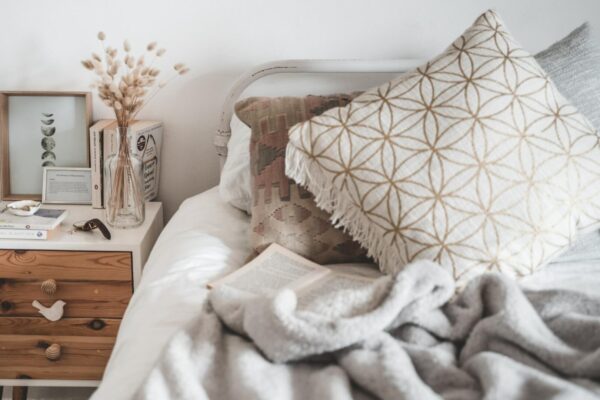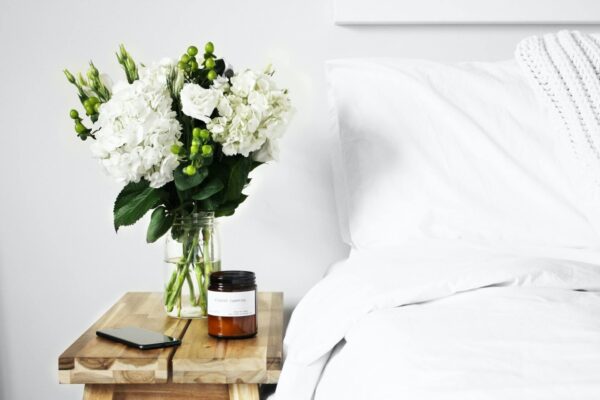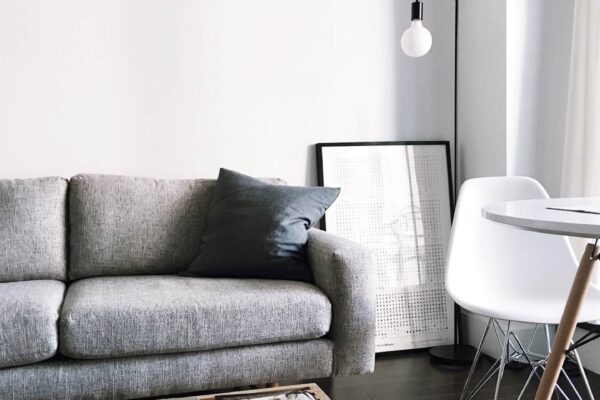Scandinavian living is not only a trend for indoors, but also for outdoors. Thanks to the Scandinavians’ traditional closeness to nature, their gardens are particularly sustainable and relaxed. It’s worth taking a look: We’ll tell you how to create your own Scandinavian-style garden. This will also help you to combat wanderlust – you’ll feel like you’re on holiday in Scandinavia.
What makes a Scandinavian garden?
Minimalism
A Scandinavian garden follows the Swedish motto lagom (“just right”) or “less is more”. Due to the short gardening season in the (far) north, it is kept minimalist. Short, light summers are followed by long, dark winters, so the outdoor seating area has to be adaptable and possibly mobile depending on the time of year and season. In Scandinavia, naturalness and sustainability are very important – the more unagitated the garden, the less complicated it is for you and the better it is for the environment.
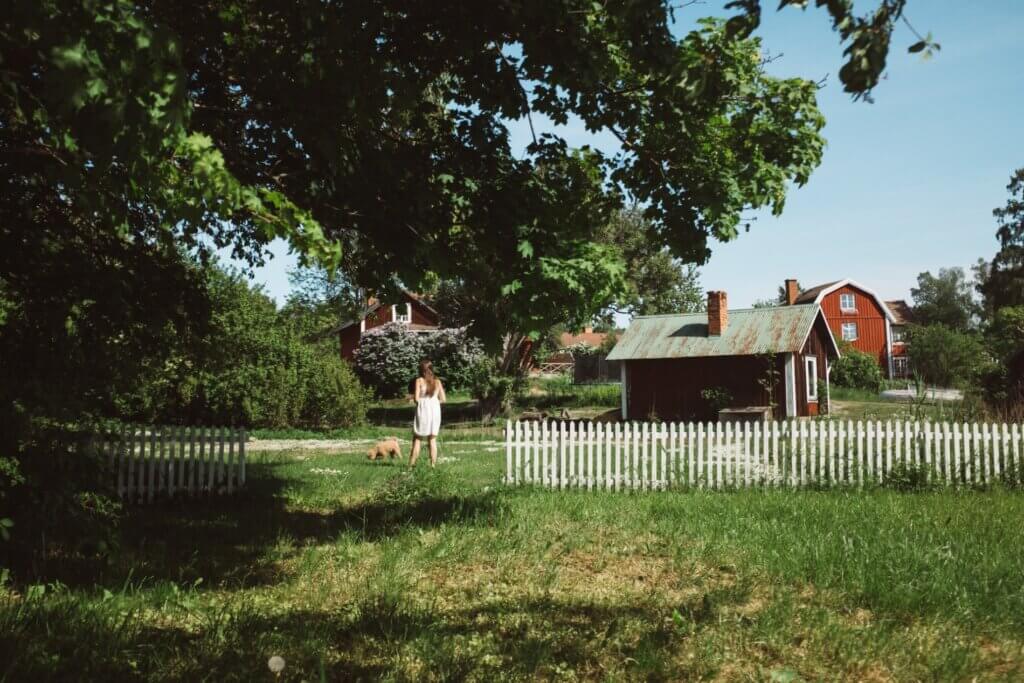
Naturalness
What exactly is meant by naturalness? A Nordic garden is functional, practical and largely natural, with no directly recognisable built structure. What is important is the mood and atmosphere to fully savour the gardening season. However, this is not created with targeted landscaping, but with small accessories and elements.
That’s why Scandinavians don’t see their garden as a perfectly laid out park with meticulously trimmed flowers and a meticulously trimmed lawn. What does a little moss and weeds here and there matter? Follow the principle: as little effort as possible for as much benefit as possible. You can find out how to do this under Landscape and plant design.
Materials, colours and shapes
As is so often characteristic of the Scandinavian style, the three criteria of material, colour and form apply to the garden as well. These reflect the aspects of minimalism and naturalness. Instead of bright colours, subtle and natural tones are used that blend in with their surroundings. The same applies to the materials. Here, wood, wicker and metal are favoured in clear and straightforward shapes. You can find out what this looks like in the Scandinavian decorative elements and garden furniture section below.
Nordic landscape and plant design
Trees
When you think of a Scandinavian garden, do you immediately think of a country idyll with large old trees, a high meadow and a garden fence? If you want a garden like Emil from Lönneberga, choose Nordic rustic trees and shrubs as the basis.
Suitable here, for example:
- Oaks
- Chestnuts
- Fruit trees, especially apple trees
Crop plants
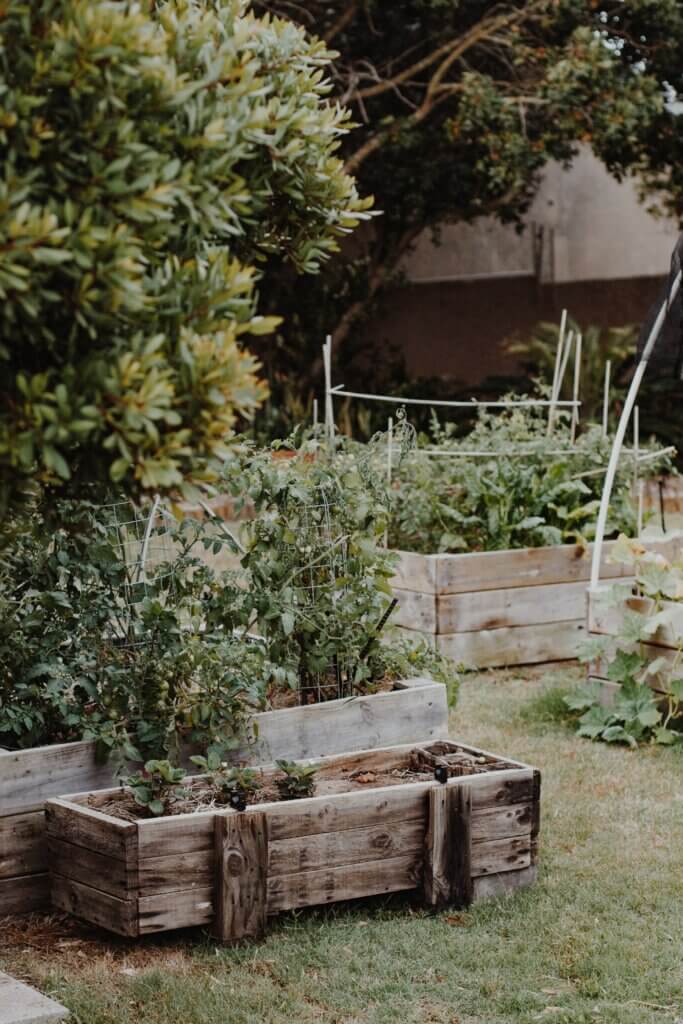
To make your own garden as sustainable and natural as possible, a mix of ornamental plants and useful plants is suitable. While ornamental plants are purely for visual purposes and make your garden look colourful in spring and summer, you can also enjoy useful plants for other purposes: as Scandinavians like to cook with seasonal and fresh ingredients, herbs, fruit and vegetable plants in particular are typical Scandinavian useful plants.
Herbs are particularly suitable for beginners, as they are easier to care for. If you don’t have a large garden, you can grow them in a raised bed, for example. If you are particularly handy, you can even build a Scandinavian-style raised bed. Incidentally, urban gardening is a trend that has become particularly popular in large Scandinavian cities and enables the cultivation of useful plants despite limited space.
Crops for a Scandinavian garden:
- Parsley
- Chives
- Dill
- Thyme
- Oregano
- Basil
- Mint
- Berry bushes (redcurrant, gooseberry, blackberry, raspberry, elderberry)
Ornamental plants
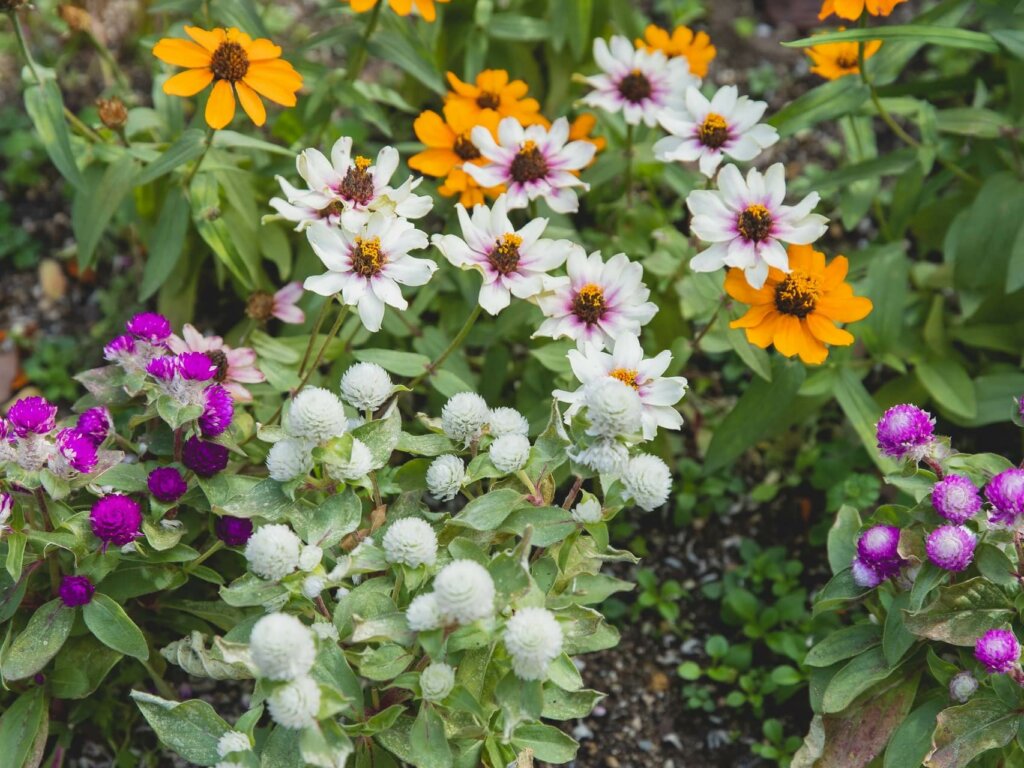
A Scandinavian garden is above all informal, which is also reflected in the selection and arrangement of ornamental plants. There are no limits to the variety of these. Different colours and shapes can be cheerfully combined with each other. However, you should make sure to plant smaller groups. Create loose beds that are not based on strict geometric shapes.
Another tip from the Scandinavians: make sure that the plants are robust and hardy so that you can enjoy them for longer and have to put less effort into caring for them. Fences and climbing aids also ensure a more natural look. A seed mix for wildflowers is particularly sustainable. Bees and other insects feel at home here.
Ornamental plants for a Scandinavian garden:
- Hardy rose varieties
- Rhododendrons
- Hydrangeas
- Climbing plants
- Hardy bamboo species
- Boxwood
- Perennials (e.g. zinnia, ginger lily, verbena, fat hen)
Scandinavian garden decoration
A typical Scandinavian garden is rounded off with decorative elements. You can also create a cheerful hygge atmosphere outside with these without disturbing the naturalness of the garden. Scandi-style outdoor decor is a mix of elegant, rustic and practical. Purist shapes meet natural materials, such as pots, fire bowls and lanterns.
Plant and flower pots
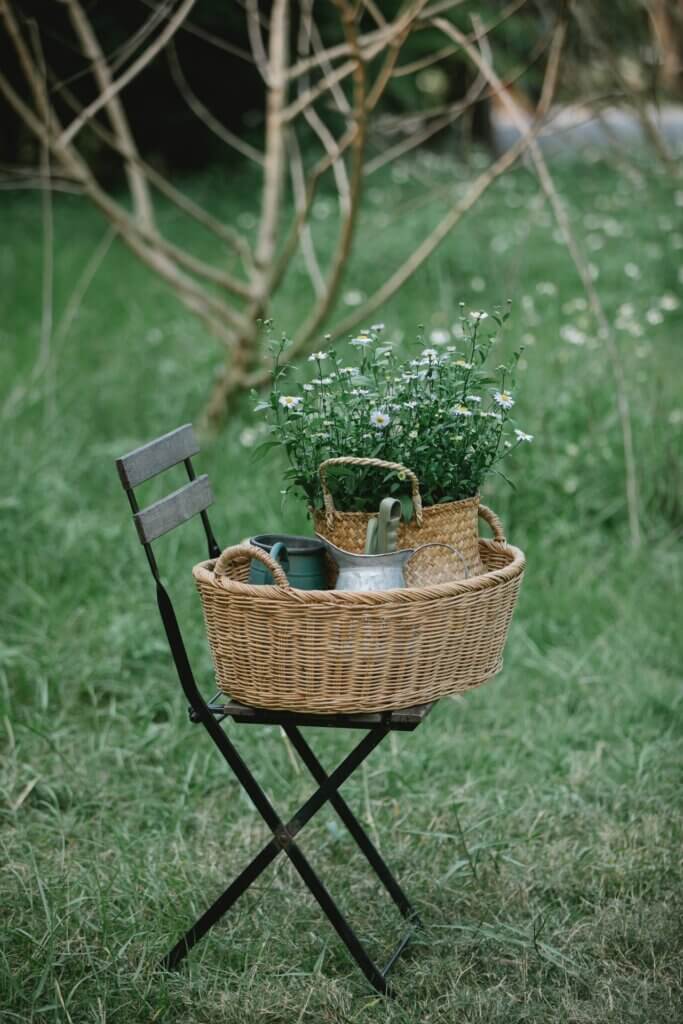
Plant and flower pots are ideal for designing smaller gardens and balconies, but they also provide design variety in larger gardens. Arrange several pots next to each other on the patio and the hygge feeling will come automatically.
Organically shaped containers made of wood and concrete as well as woven baskets made of jute and seagrass look particularly natural. Old pewter tubs, (steel) watering cans or pots create a casual vintage ambience in a green setting. If you prefer a modern and minimalist look, avoid small-scale arrangements and opt instead for large planters as eye-catchers. These go particularly well with Scandinavian-style lounge furniture.
If you have a penchant for seasonal plants and flowers, you should put them in pots and not in flower beds to save effort. As a general rule, don’t overdo it and use flower pots sparingly. Colourful porcelain vases are taboo!
Lighting
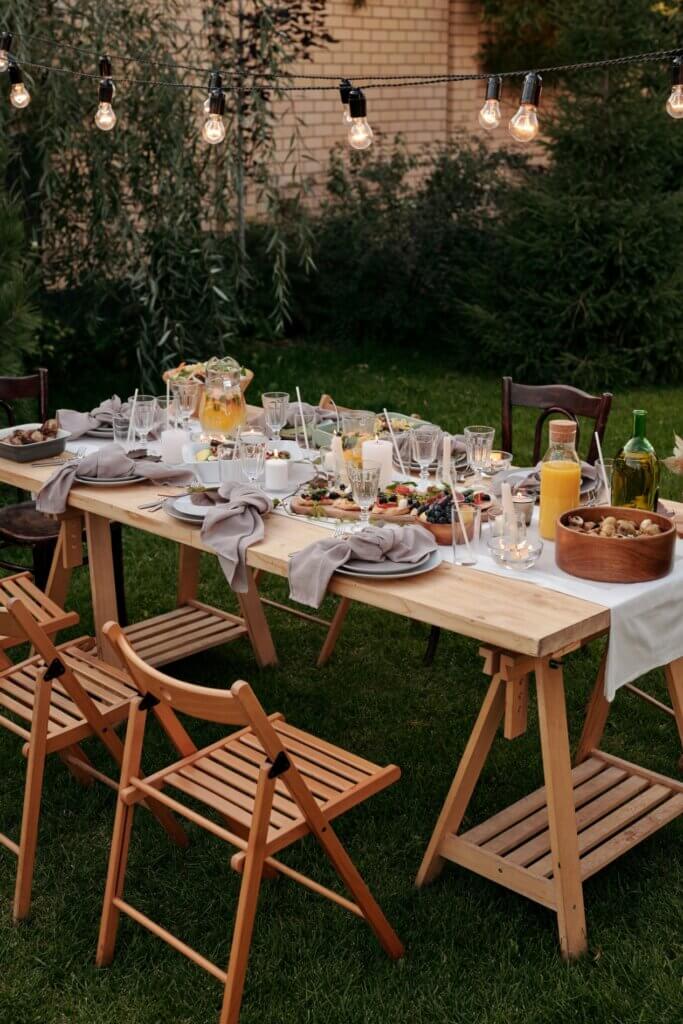
As Scandinavians celebrate the garden season and savour it well into the evening hours, lighting is a key element in garden design: lanterns, fairy lights, torches and candles create a cosy atmosphere as dusk falls.
Even festive occasions can be moved outside. One example of this is the Swedish Midsommar festival, which is traditionally held in the garden at home with family and friends. The garden table is quickly transformed into a festive table with candles and fairy lights.
Natural materials and minimalist colours, such as a woven lantern, are also suitable as lighting elements. If there are larger trees in the garden, lanterns and fairy lights can be hung in them. Battery-powered fairy lights are specifically practical as they can be used flexibly. Choose simple block and pillar candles with a particularly long burning time for the table decorations and lanterns.
Fire pits
Open fire pits provide even more light and warmth in the garden. Whether it’s a garden fireplace or a fire bowl – when you gather around the fire in the evening wrapped in blankets and throw wood into the embers, the hygge feeling in the garden is complete. By the way, so-called Swedish fires are traditionally Nordic. These are vertical tree trunks that are cut in the centre and made to burn.
Birdhouses and insect hotels
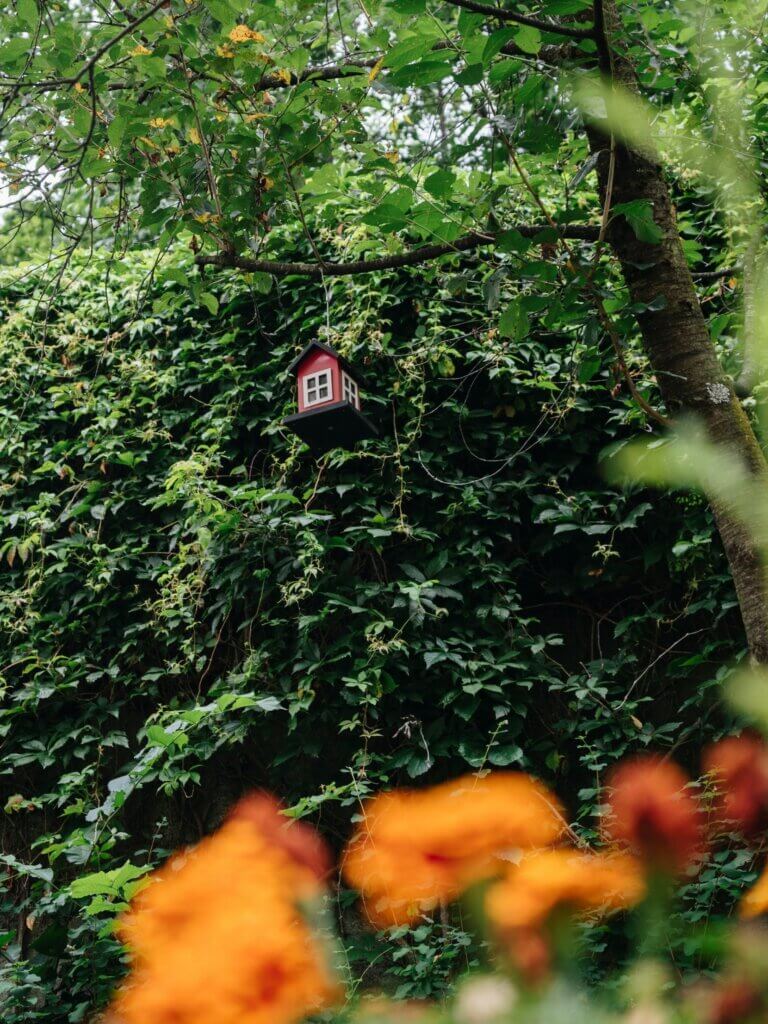
When it comes to naturalness, it’s not just the flora that counts, but also the fauna. Here, the garden allows for some design elements that will soon attract many useful inhabitants. A pronounced environmental awareness and a strong connection to nature are typically Scandinavian. Reason enough to adapt the garden design to more than just your own needs.
Birdhouses modelled on the small red Swedish houses immediately add Scandi flair to the garden. Or how about a nesting box or insect hotel? These are mostly made of simple wood and complete the natural overall look of the Scandinavian garden.
Insect hotels offer additional shelter, nesting and hibernation aids for insects. If you are creative, you can easily build them yourself.
Patio design: Scandinavian-style garden furniture
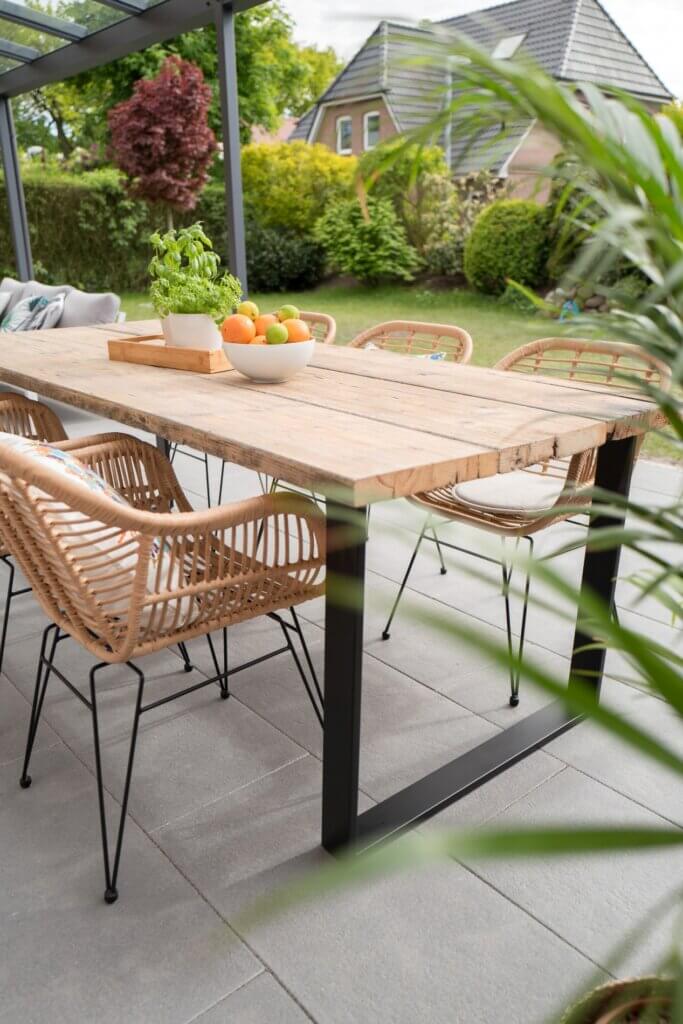
The crowning glory of a Scandinavian garden is the matching patio from which you can look out over the greenery. The right Scandi-style garden furniture is essential here. This is typically made of wood or metal in white, black or a natural look. Elements such as wickerwork and textiles are also incorporated.
Lounge furniture looks particularly elegant. However, make sure that they don’t look too massive and clunky, but blend in with the natural look of the garden. Matching parasols in subtle and natural colours are ideal for the summer.
Make yourself cosy with Scandinavian-style cushions and blankets and cover your garden table with a light linen tablecloth for dining or for visitors. Make it even cosier with a large outdoor rug that you can place under your patio furniture.
Holidays in the garden: Scandinavian garden houses and outdoor saunas
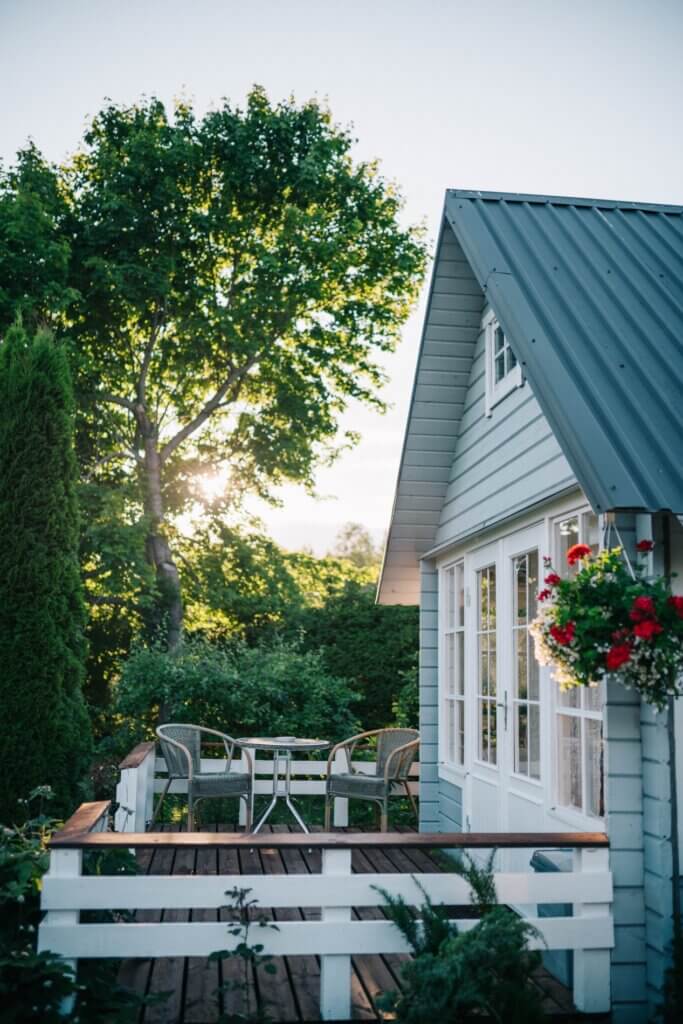
Would you like to bring a real holiday feeling into your garden and dream of your own little Swedish house, a stuga? There is a large selection of wooden houses in the typical colours of Falun red, grey and blue. If you want to combine appearance and function in the Scandinavian sense, choose a small tool shed in the Nordic style, for example. A Scandinavian garden shed with its own veranda is particularly cosy and immediately makes you feel like you’re on a short holiday.
Or how about a Finnish sauna? In Finland, people like to treat themselves to a few infusions in the outdoor sauna in their own garden. Although this private wellness programme initially involves an investment, smaller barrel saunas are available at slightly lower prices.
